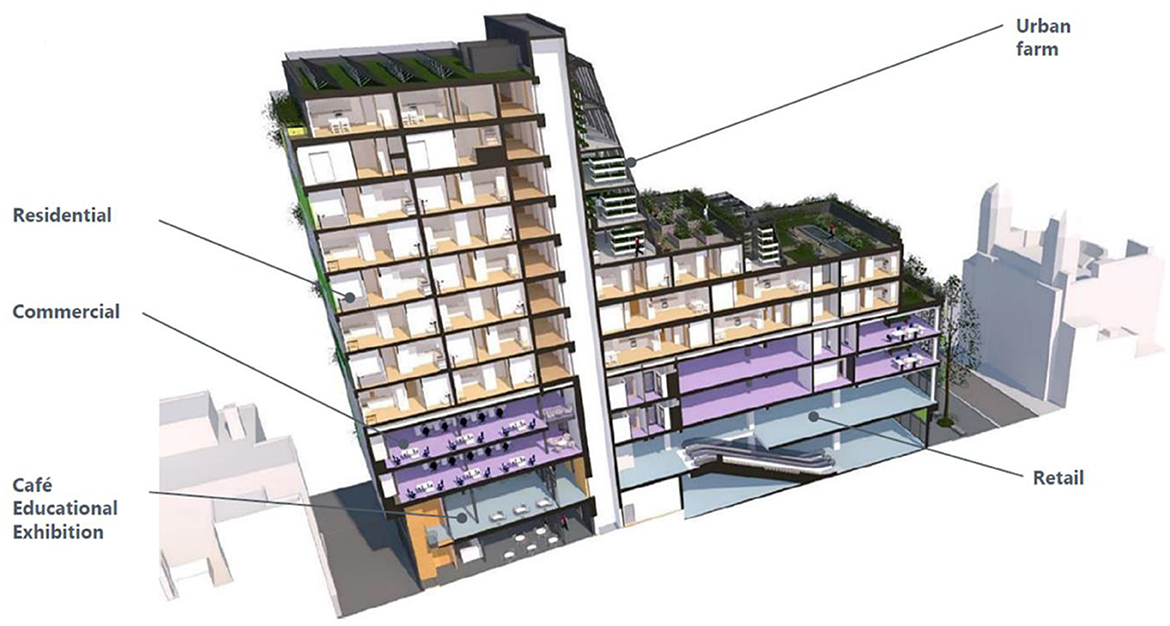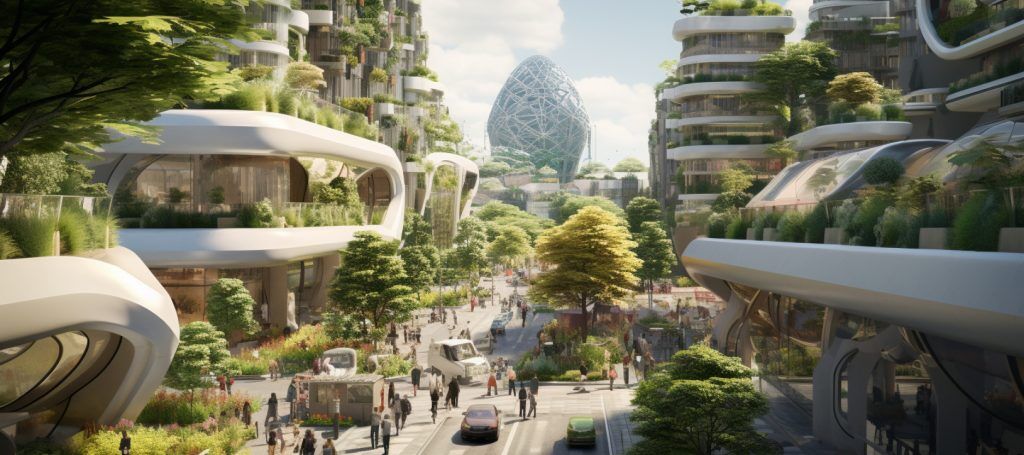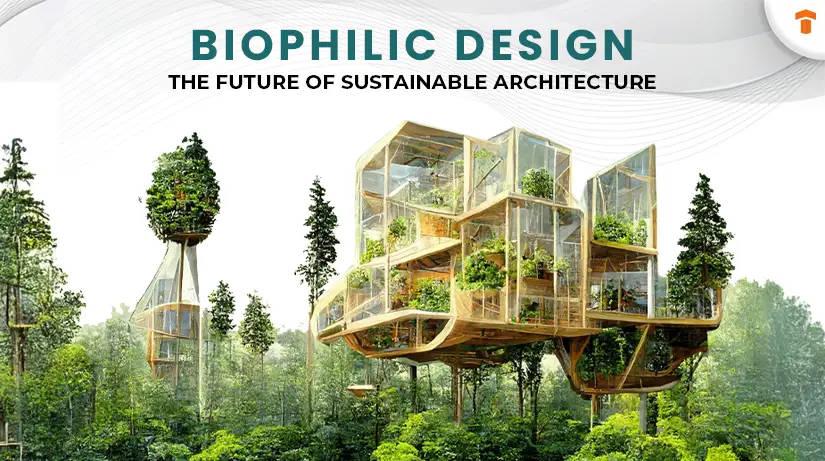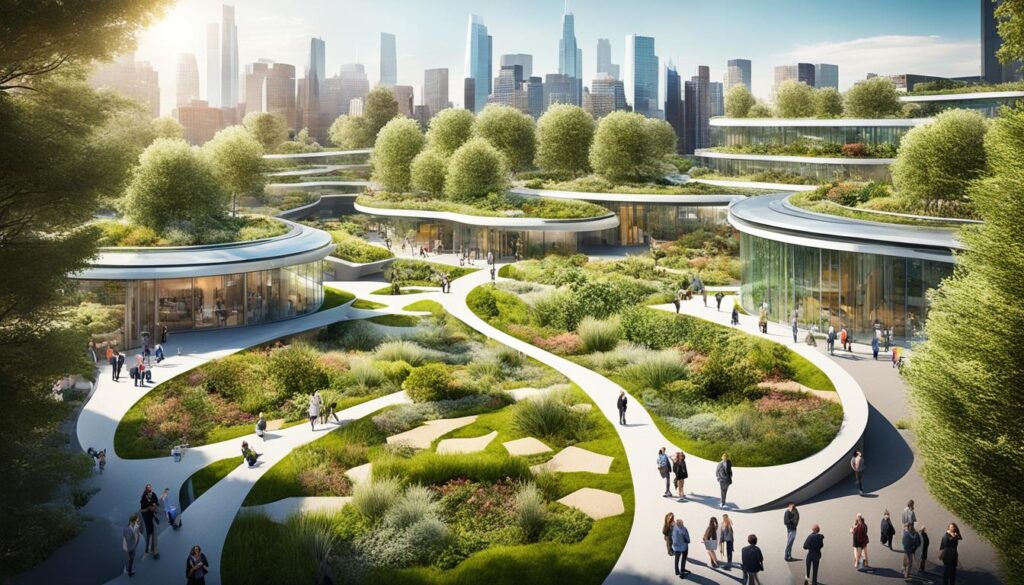Transportation and Mobility in Biophilic Urban Planning.
Transportation and mobility are critical factors in the development of biophilic urban environments, where the coexistence of nature and human activity is paramount. These concepts are integral to the process of nature integration and urban resilience, ensuring that cities remain adaptable and sustainable.
This article examines the advantages of integrating transportation solutions that improve access to urban green spaces and foster walkability, bikeability, and public transit options, emphasizing the importance of sustainable transportation and smart mobility.
We analyze essential components of biophilic urban planning, including nature-based solutions and green infrastructure, and their potential to enhance community health and sustainability while addressing the challenges that cities encounter in this pursuit.
This discussion aims to highlight how strategic planning can reshape urban spaces for a more sustainable and environmentally friendly future.
Why is Transportation and Mobility Important in Biophilic Urban Planning?
.jpg_00.jpeg)
Transportation and mobility are essential components of biophilic urban planning, as they significantly enhance community connectivity, promote sustainable transportation options, and facilitate access to urban green spaces, thereby contributing to the overall livability of cities.
An effectively integrated transportation system can support ecological corridors, foster urban biodiversity, and ensure that urban planning policies align with green infrastructure initiatives and transit-oriented development.
By prioritizing human-centered design and accessibility, urban planners can develop transportation networks that not only reduce carbon emissions but also enhance the quality of life for residents.
This comprehensive approach is vital for cultivating urban ecosystems that are resilient to climate change and promote social equity, enhancing both urban mobility and community connectivity.
What are the Benefits of Incorporating Transportation and Mobility in Biophilic Urban Planning?
Incorporating transportation and mobility into biophilic urban planning offers a range of benefits, including enhanced walkability, improved public transit systems, and increased opportunities for active transportation.
By integrating sustainable transport options with green infrastructure, cities can establish vibrant urban green spaces that promote community engagement and well-being. The principles of biophilic design ensure that these transportation networks not only fulfill functional purposes but also connect residents to nature, thereby enhancing their overall quality of life.
Moreover, prioritizing ecological sustainability within transportation planning contributes to the reduction of noise pollution and the improvement of air quality in urban environments.
This integration leads to numerous positive outcomes for urban populations. For example, enhanced walkability encourages more residents to opt for walking or cycling instead of driving, resulting in decreased traffic congestion and fostering a sense of community.
Research indicates that neighborhoods designed with these principles typically exhibit lower rates of obesity and related health conditions due to increased levels of physical activity. Additionally, improved public transit systems that incorporate green technologies can significantly reduce greenhouse gas emissions.
Cities that prioritize eco-friendly transportation options, such as green commuting and multi-modal transportation, often report higher levels of citizen satisfaction and retention, illustrating that when transportation and green spaces function in harmony, the quality of life for all stakeholders is substantially enhanced.
What are the Key Elements of Biophilic Urban Planning in Relation to Transportation and Mobility?
The essential components of biophilic urban planning concerning transportation and mobility consist of a variety of strategies aimed at enhancing community connectivity while promoting ecological sustainability and inclusive design.
These components include:
- the development of pedestrian pathways to encourage walkability,
- the establishment of cycling infrastructure to support active transportation,
- the integration of green infrastructure to create ecological corridors.
Furthermore, the principles of biophilic design inform the incorporation of nature-based solutions within transportation systems, fostering a harmonious relationship between urban environments and natural habitats.
By prioritizing these components, urban planners can develop livable cities that facilitate sustainable mobility, promote active transportation, and enhance the quality of life for residents, ensuring that urban spaces become pedestrian-friendly and supportive of urban biodiversity.
1. Access to Nature
Access to nature is a fundamental component of biophilic design, providing numerous advantages for urban residents in terms of mental health, well-being, and community connectivity.
By ensuring that urban planning incorporates easily accessible green spaces, ecological corridors, and nature-based urbanism, cities can facilitate immersion in nature and promote a deeper connection between residents and their environments, contributing to the psychological well-being of urban dwellers.
Such environments enhance air quality and serve as essential social hubs where community members can gather, engage in shared activities, and develop meaningful relationships.
Notable examples of successful biophilic urban designs include the High Line in New York City, which has transformed an abandoned railway into a flourishing park, and Singapore’s Gardens by the Bay, which seamlessly integrates nature into its urban landscape.
These initiatives illustrate how prioritizing natural elements can significantly improve residents’ quality of life by enhancing mental well-being, fostering a sense of belonging among diverse populations, and supporting urban regeneration.
2. Walkability and Bikeability
Walkability and bikeability are essential elements of urban planning that promote active transportation and enhance overall community health. The development of well-designed pedestrian pathways and cycling infrastructure not only encourages physical activity but also supports social equity by providing accessible transportation options for all residents.
By prioritizing walkable and bikeable environments, cities can improve connectivity, decrease reliance on motor vehicles, and contribute to the creation of sustainable transport networks that align with biophilic design principles, thereby supporting urban mobility solutions and reducing the urban heat island effect.
These components are crucial in shaping vibrant public spaces that facilitate community interaction. For example, cities such as Copenhagen and Amsterdam have effectively integrated extensive cycling networks, which not only alleviate traffic congestion but also encourage healthier lifestyles among their populations.
Urban areas that emphasize walkability frequently experience increased local business activity, as pedestrians are more likely to patronize neighborhood shops and cafes, which supports economic vitality and community engagement. This shift towards active transportation not only promotes the physical well-being of individuals but also helps to bridge gaps in social equity, ensuring that all residents, regardless of income, have reliable access to essential services and recreational opportunities.
3. Public Transportation
Public transportation is a critical component of sustainable urban planning, offering accessible and efficient mobility options for diverse populations. By developing integrated transport systems that connect various modes of transit, including mobility hubs and digital mobility solutions, cities can enhance community connectivity and alleviate roadway congestion.
A well-structured public transit system, such as the extensive bike-share and tram network in cities like Amsterdam, not only facilitates seamless movement but also bolsters local economies by fostering the growth of small businesses near transit hubs.
Furthermore, effective public transportation can reduce dependence on personal vehicles, thereby decreasing traffic-related pollution and promoting healthier lifestyles, as individuals are encouraged to walk or cycle to transit stations.
Cities like Curitiba, Brazil, serve as exemplary models of how dedicated bus rapid transit lanes can significantly improve urban resilience. This approach allows for a more adaptive response to demographic changes and climate-related challenges while strengthening community ties through the creation of shared public spaces.
4. Green Infrastructure
.jpg_01.jpeg)
Green infrastructure is crucial for promoting sustainable transportation and enhancing urban ecosystems, offering a range of environmental and social benefits. The integration of elements such as green roofs, tree canopies, and urban agriculture into transportation planning not only alleviates the urban heat island effect but also facilitates efficient stormwater management.
These components can significantly decrease air pollution and enhance biodiversity by providing habitats for various species. For example, cities like New York have adopted green roofs on buildings, which not only insulate the structures but also manage rainfall effectively.
In a similar vein, Singapore’s comprehensive tree-planting initiatives and green corridors exemplify how urban areas can bolster the resilience of transportation networks, enhancing infrastructure resilience and urban biodiversity. By prioritizing such initiatives, urban planners can cultivate more sustainable and vibrant communities while effectively addressing climate change challenges, ensuring that cities are better prepared for the future.
How Can Biophilic Urban Planning Improve Transportation and Mobility?
Biophilic urban planning holds the potential to greatly enhance transportation and mobility by diminishing reliance on automobiles, promoting sustainable communities, and facilitating active transportation alternatives.
By strategically designing urban environments that prioritize green spaces, pedestrian pathways, cycling infrastructure, and active design principles, cities can cultivate settings that encourage residents to adopt healthier modes of transportation, thereby reducing their ecological footprint.
Moreover, the principles of biophilic design contribute to climate adaptation by fostering urban resilience and ensuring that sustainable transportation networks, including public transit and cycling infrastructure, are adequately prepared to address the challenges presented by environmental changes.
1. Reducing Car Dependency
Reducing car dependency is a fundamental objective of biophilic urban planning, as it promotes the adoption of active transportation and sustainable transport alternatives. By developing pedestrian-friendly environments that prioritize walkability and cycling infrastructure, cities can effectively diminish reliance on personal vehicles, resulting in improved air quality, reduced traffic congestion, and a lower carbon footprint.
This transformation not only benefits the environment but also enhances community engagement and connectivity, fostering a healthier urban lifestyle for residents.
Cities such as Amsterdam and Copenhagen exemplify this transformation through their extensive bike lanes and pedestrian-friendly infrastructure, which encourage walking and cycling as viable daily activities. Such initiatives have been shown to reduce the incidence of respiratory diseases and obesity, as more individuals are motivated to incorporate physical activity into their routines.
Enhanced air quality yields a variety of benefits, contributing to healthier ecosystems and lowering overall healthcare costs.
Ultimately, the advantages of decreasing car dependency extend beyond transportation, positively influencing economic vitality, social interactions, and the overall quality of life within urban environments.
2. Creating Healthier and More Sustainable Communities
The creation of healthier and more sustainable communities is fundamental to biophilic urban planning, which emphasizes the integration of green infrastructure and biophilic design principles. By prioritizing eco-friendly transportation options, such as walking and cycling, cities can enhance community health and well-being while simultaneously promoting environmental sustainability and urban biodiversity.
The inclusion of urban green spaces and greenway corridors within transportation networks further improves residents’ quality of life and fosters a deeper connection with nature, enhancing their psychological well-being and promoting nature-based solutions.
This connection not only enriches individual well-being but also promotes social interaction among community members, resulting in stronger and more resilient neighborhoods. The design of streets and pathways incorporates infrastructure resilience and can encourage physical activity by establishing inviting and safe routes for cyclists and pedestrians, thereby supporting active design principles.
Additionally, the incorporation of native plants in urban landscapes can enhance air quality and mitigate the urban heat island effect, thereby serving dual purposes and contributing to ecological balance while supporting urban ecosystems.
Ultimately, comprehensive urban planning that incorporates these elements enables cities to cultivate environments where health, community engagement, and sustainability coexist harmoniously, fostering vibrant spaces for all residents.
3. Promoting Active Transportation
Promoting active transportation, such as walking and cycling, constitutes a vital component of biophilic urban planning that enhances community connectivity and encourages healthier lifestyles. By designing pedestrian-friendly environments and developing robust cycling infrastructure, cities can create spaces that motivate residents to engage in active mobility.
The integration of biophilic design elements within these transportation networks not only elevates aesthetic appeal but also fortifies the relationship between residents and their urban surroundings.
Embracing active transportation yields numerous benefits that extend beyond physical health, including improved air quality resulting from reduced vehicle emissions and an overall enhanced sense of community.
For example, cities like Copenhagen and Amsterdam have successfully implemented extensive cycling lanes and pedestrian zones, leading to increased bicycle usage, decreased traffic congestion, and the promotion of social interactions among residents.
Initiatives such as car-free days and the establishment of greenways exemplify how urban areas can prioritize active mobility, ultimately fostering vibrant, sustainable cities where individuals feel connected to both nature and each other.
4. Enhancing the Aesthetics of Transportation Infrastructure
Enhancing the aesthetics of transportation infrastructure is a vital objective of biophilic urban planning, as it contributes to a more inviting and engaging urban environment.
By integrating biophilic design elements such as greenery, art, and natural materials, cities can transform conventional transportation networks into vibrant public spaces that promote community engagement and connectivity. This approach not only enhances the visual appeal of these infrastructures but also encourages residents to adopt sustainable transport options.
Cities such as Milan and Singapore exemplify the successful integration of these elements.
In Milan, the redevelopment of the Porta Garibaldi district features green roofs and vertical gardens throughout its transit facilities, creating a lush environment where nature coexists harmoniously with urban life. Similarly, Singapore’s extensive network of sky gardens and eco-friendly skyways not only beautifies public spaces but also fosters social interaction among its residents.
By prioritizing the aesthetic quality of transportation systems, urban planners can significantly enhance the well-being of communities, fostering a strong sense of place and belonging while paving the way for a more sustainable future.
What are the Challenges of Incorporating Transportation and Mobility in Biophilic Urban Planning?
.jpg_10.jpeg)
Incorporating transportation and mobility into biophilic urban planning involves navigating several challenges that urban planners must address in order to develop effective and equitable solutions.
Factors such as urban density, limited resources, and potential resistance to change can impede the implementation of sustainable transportation systems.
Furthermore, it is essential to ensure that transportation solutions promote transportation equity and accessibility for all residents, which is a critical component in overcoming these challenges and supporting inclusive design principles.
Effectively addressing these obstacles necessitates a comprehensive understanding of urban policies as well as the application of community engagement strategies.
1. Limited Space and Resources
Limited space and resources present substantial challenges to the effective integration of transportation and mobility within biophilic urban planning. Urban areas frequently grapple with high population densities, resulting in competition for land and constrained opportunities for the expansion of sustainable transport networks. This limitation necessitates innovative land use planning approaches that optimize the use of available resources while prioritizing environmental sustainability and community health.
One effective strategy involves the implementation of multi-use pathways that cater to both pedestrians and cyclists, thereby minimizing the need for separate lanes and enhancing connectivity throughout neighborhoods. Additionally, the incorporation of green roofs and vertical gardens can facilitate the reclamation of underutilized spaces, enabling the establishment of micro-mobility hubs that promote e-bikes and scooters.
Cities such as Amsterdam and Copenhagen have established precedents for these initiatives, demonstrating that integrated public spaces not only enhance aesthetic appeal but also contribute to the development of healthier, more vibrant urban communities.
Furthermore, leveraging technology for data-driven decision-making allows planners to optimize traffic flow and identify high-traffic areas that could benefit from redesign.
2. Resistance to Change
Resistance to change represents a significant challenge within the fields of transportation and urban planning, as communities may exhibit reluctance to adopt new concepts or modify established practices. This resistance may arise from various factors, including concerns related to social equity and the potential effects of new infrastructure on existing neighborhoods.
To effectively address these challenges, urban planners must prioritize community engagement and education to promote understanding and acceptance of biophilic design principles.
Such engagement can take multiple forms, ranging from inclusive public forums to interactive workshops, enabling community members to express their opinions and concerns freely. By actively involving local residents in the decision-making process, planners can foster a sense of ownership regarding the proposed changes and alleviate apprehensions related to gentrification or community disruption.
Presenting successful case studies from similar projects can also contribute to creating a realistic understanding of the benefits that new transportation initiatives may offer, ultimately facilitating innovative improvements within urban environments.
3. Balancing Different Needs and Priorities
Balancing various needs and priorities in transportation and urban planning is crucial for developing inclusive and effective solutions. Urban planners must take into account a broad spectrum of factors, including social equity, environmental impact assessment, and community health, to create transportation networks that adequately serve diverse populations and enhance urban form.
This necessitates a thorough evaluation of competing interests and a commitment to integrating biophilic design principles that promote well-being and resilience.
The challenge extends beyond merely understanding these individual requirements; it also involves facilitating meaningful stakeholder engagement to ensure that the voices of all community segments are heard. Engaging with residents, local businesses, and advocacy groups can provide valuable insights that enhance the decision-making process by integrating principles of transportation equity and social cohesion.
By prioritizing social equity and transportation equity, urban planners can address historical injustices and create opportunities for marginalized communities, ensuring that sustainable transportation initiatives do not inadvertently perpetuate existing disparities.
The multifaceted nature of urban challenges requires collaborative approaches, wherein diverse perspectives contribute to holistic strategies that ultimately benefit all, fostering vibrant and sustainable cities with enhanced urban resilience and quality of life.
How Can Cities Overcome these Challenges and Implement Biophilic Urban Planning for Transportation and Mobility?
Cities can effectively address the challenges associated with integrating biophilic urban planning into transportation and mobility by implementing collaborative strategies, emphasizing long-term planning, enhancing education and awareness among stakeholders, and promoting eco-friendly transportation and public transit systems.
Strategic collaboration among government agencies, community organizations, and the private sector can promote the development of integrated transport systems that prioritize sustainability, social equity, and smart mobility solutions.
Furthermore, fostering a culture of education and awareness can give the power to communities to actively participate in the planning process and advocate for their transportation needs.
1. Collaboration and Communication
Collaboration and communication are critical components of effective biophilic urban planning, particularly in the areas of transportation and mobility. By fostering partnerships among a diverse array of stakeholders, cities can develop comprehensive transportation networks that address the needs of all community members.
Effective communication ensures that all perspectives are acknowledged, promoting transparency and trust while facilitating meaningful community engagement in the planning process, ultimately enhancing community connectivity and inclusive design.
Such collaborative efforts often yield innovative solutions that reflect the varied needs of urban populations. For instance, the successful transformation of Bogotá’s TransMilenio bus rapid transit system serves as an exemplary model of how stakeholder involvement can create efficient transportation systems. Community forums provided citizens with opportunities to express their concerns and prioritize accessibility, resulting in a system that markedly improved mobility throughout the city.
Similarly, the collaboration between urban planners and local residents in the development of Amsterdam’s cycling infrastructure has established one of the most bike-friendly cities in the world, demonstrating how active community engagement can lead to sustainable mobility solutions.
These examples underscore that cooperative efforts not only enhance transportation initiatives but also foster a sense of ownership among community members, contributing to walkable communities and improved public spaces.
2. Long-term Planning and Flexibility
.jpg_11.jpeg)
Long-term planning and flexibility are essential components for the successful implementation of biophilic urban planning concerning transportation and mobility. By anticipating future needs and challenges, urban planners can develop adaptive strategies that foster urban resilience and sustainability. This proactive approach enables cities to modify their transportation systems in response to shifting demographics, technological advancements, and environmental conditions, ensuring their continued effectiveness and relevance over time.
For example, cities such as Amsterdam have implemented bike-sharing programs and expanded their cycling infrastructure, illustrating their flexibility in adapting to car-free initiatives. Similarly, Portland’s transition to electric buses exemplifies how urban transportation can evolve in line with technological advancements while simultaneously addressing air quality concerns.
These instances underscore the importance of embracing innovation and establishing adaptable frameworks for transportation planning, ultimately enhancing urban resilience and fostering sustainable cities in an increasingly dynamic environment.
3. Education and Awareness
Education and awareness play a critical role in fostering community support and engagement in biophilic urban planning, particularly concerning transportation and mobility. By informing residents about the benefits of sustainable practices and the significance of active transportation, cities have the opportunity to inspire greater participation in the planning process.
Educational initiatives can empower communities to advocate effectively for their transportation needs, promote environmentally responsible behaviors, and enhance the understanding of ecosystem services and urban biodiversity.
Programs such as workshops, community seminars, and school initiatives have proven to be instrumental in raising awareness about the value of integrating nature into urban environments. For example, cities that have collaborated with local organizations to conduct interactive sessions on green infrastructure have observed an increase in public interest and involvement.
These initiatives serve not only to educate the community regarding the ecological advantages of biophilic designs but also to underscore the positive social impacts that thoughtful transportation planning can yield.
Engaging residents through hands-on projects, such as the creation of green spaces or the evaluation of public transit options, fosters a deeper connection between the community and their built environment, thus enhancing their investment in sustainable urban development and promoting urban regeneration.
Frequently Asked Questions
What is biophilic urban planning and how does it relate to transportation and mobility?
Biophilic urban planning is an approach to city planning that incorporates natural elements and systems into urban environments to improve residents’ well-being. In terms of transportation and urban mobility, this means prioritizing modes of transportation that are more environmentally friendly and promote connection to nature, such as walking, biking, and public transit, while also integrating green commuting and urban ecosystems.
Why is transportation and mobility an important aspect of biophilic urban planning?
Transportation and urban mobility are crucial components of biophilic urban planning because they directly impact the well-being of city residents. By prioritizing sustainable and nature-connected modes of transportation, cities can promote physical and mental health, reduce environmental harm, and create more livable, resilient, and pedestrian-friendly communities.
What are some examples of biophilic transportation and mobility strategies?
Some examples of biophilic transportation and mobility strategies include creating pedestrian and bike-friendly streets, implementing green infrastructure for stormwater management, and incorporating natural elements into public transit stations and routes. Other strategies include creating greenways and trails for non-motorized transportation, promoting electric and hybrid vehicles, and designing public spaces that prioritize human-scale movement and incorporate nature-based solutions.
How does biophilic urban planning affect transportation and mobility for different populations?
Biophilic urban planning can positively impact transportation and mobility for various populations, including children, elderly individuals, and those with disabilities. By prioritizing walking, biking, and public transit, cities can create safer and more accessible transportation options for these populations. Additionally, incorporating nature into transportation and mobility infrastructure can improve psychological well-being and mental health for all residents, enhancing habitat connectivity and urban wildlife.
What are the benefits of integrating biophilic elements into transportation and mobility infrastructure?
Integrating biophilic elements into transportation and mobility infrastructure can have numerous benefits, such as reducing air and noise pollution, promoting physical activity, and providing opportunities for nature connection and urban tree canopy development. These benefits can lead to improved public health, increased community resilience, and a more sustainable urban environment.
How can cities incorporate biophilic urban planning principles into their transportation and mobility policies?
Cities can incorporate biophilic urban planning principles into their transportation and mobility policies by conducting thorough planning and design processes that prioritize nature and sustainability. This can include involving community members, conducting environmental impact assessments, and partnering with organizations and experts in biophilic design. Additionally, cities can actively promote and incentivize sustainable modes of transportation and incorporate nature-based solutions into transportation infrastructure projects, ensuring the integration of urban design principles and landscape urbanism.

I’m Bruno, an architect with a deep passion for Biophilic Design in Urban Architecture. Throughout my career, I’ve focused on integrating natural elements into urban planning, and I created this site to share my insights and foster a deeper understanding of how biophilic principles can significantly enhance urban living. Dedicated to sustainable development, I continually explore innovative design solutions that promote both environmental and human well-being in city landscapes.














Publicar comentário